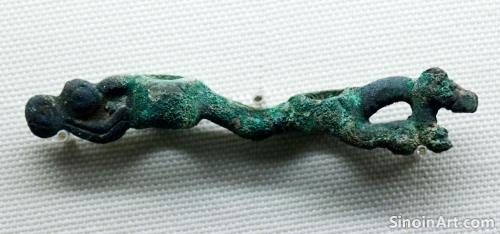Bronze Ware and the Development of Ancient Chinese Cartography: Surveying Tools and Geographic Understanding
|
While the emphasis in cartography is often placed on paper maps, bronze played a crucial role in ancient Chinese mapmaking, used to create tools for surveying, measuring, and constructing models, and highlighting the complex interplay of both scientific and practical knowledge. The creation of these instruments highlights the sophistication of both the scientific and also the technological approaches of the time.  Bronze was used to create precision surveying instruments, such as compasses, sighting devices, and graduated scales, which were essential for mapping the land and measuring distances accurately. The durability and reliability of bronze instruments helped to make large scale mapping projects both more practical and also more accurate.  Bronze was also used to create molds and templates for creating models of the land, often used for planning building projects, or for understanding the relationship between different geographical features. The careful application of scientific principles allowed for the creation of more detailed and accurate maps of the landscape.  The use of bronze in cartography demonstrates the value that the ancient Chinese placed on accurate measurement and understanding of the natural world, and also reflects a commitment to both technological innovation and scientific study. The use of bronze in the tools and processes of cartography helps to reveal its importance in the culture of the time. The study of bronze in relation to ancient Chinese cartography helps us to appreciate the complex ways in which technology, mathematics, and practical application were used to shape our understanding of the world. The combination of different areas of knowledge is a hallmark of the ingenuity of ancient Chinese thought. |
Tag : bronze cartography, ancient Chinese maps, surveying tools, geographic understanding, measurement instruments
Related information
- Bronze Ware and the Transmission of Ancient Chinese Knowledge: Libraries, Archives, and Scholarship
- Bronze Ware and the Development of Ancient Chinese Trade Practices: Routes, Markets, and Exchange
- The Evolution of Bronze Decoration: From Simple Lines to Complex Narratives
- The Influence of Tang Dynasty Culture on the Design and Decoration of Bronze Ware
- The Impact of the Silk Road on the Styles and Techniques of Chinese Bronze Ware
This article explores how bronze ware was used in the transmission of knowledge in ancient China, highlighting its role in creating records, tablets, archive labels, and other objects that helped to document, preserve, and disseminate information for future generations.
This article explores the role of bronze ware in the development of ancient Chinese trade practices, highlighting the emergence of trade routes, markets, and systems of exchange, and revealing its economic, social, and cultural impact.
This article explores the evolution of bronze decoration, highlighting the shift from simple geometric patterns to more complex motifs and narratives, showcasing the technical and artistic development of ancient Chinese bronze workers.
This article explores the influence of Tang Dynasty culture on bronze ware, highlighting new forms, decorative techniques, and their shift toward more refined and elegant designs that reflect the style of the period, and its focus on elegance and beauty.
This article explores the impact of the Silk Road on Chinese bronze ware, highlighting the introduction of foreign motifs, new techniques, and how the exchange of goods and ideas shaped the styles and forms of bronze artifacts in ancient China.